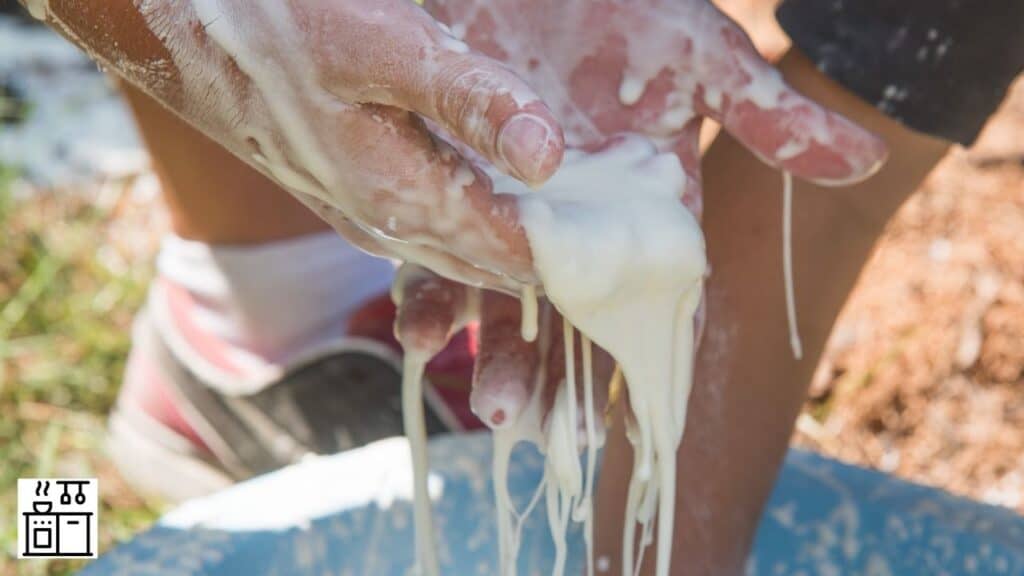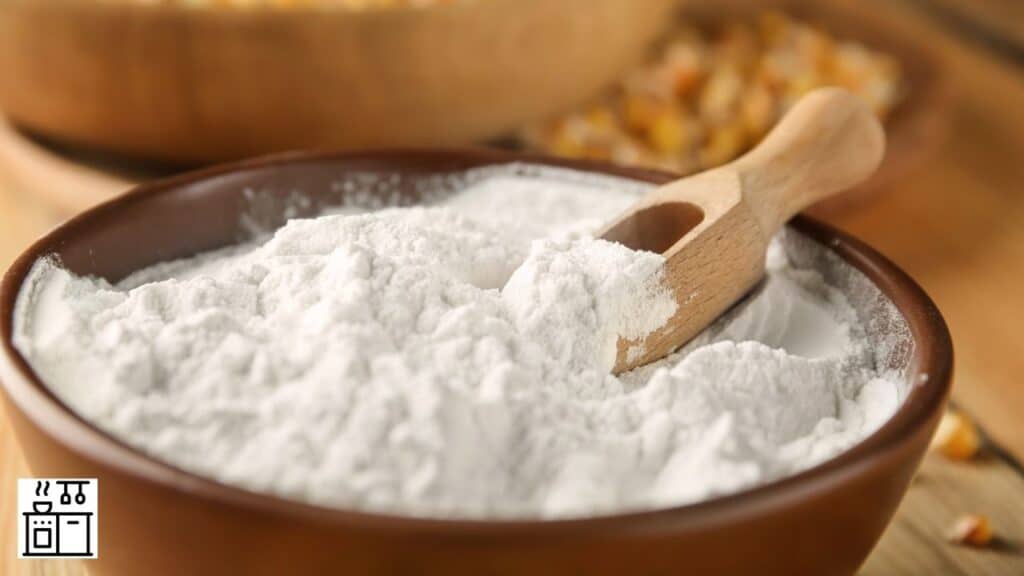Since cornstarch is used in many popular recipes to thicken custards, sauces, and stews, it’s essential to know exactly how to mix it with water.
Cornstarch can dissolve in hot water, as the heat disrupts the bonds and makes them soluble. Cornstarch consists of long chains of starch molecules that don’t dissolve in cold or room temperature water. As a slurry or suspension mixture, solid particles spread through the water without dissolving.
Also known as cornflour, this white, powdery, flour-like substance is extracted from the corn kernel’s outermost layer (called the endosperm). The neutral color, smell, taste, and tremendous versatility make cornstarch an invaluable household product. But…
What Happens When You Mix Cornstarch And Water?
Cornstarch is a carbohydrate composed of two starches: amylose and amylopectin.
The starches form minuscule granules that are insoluble in water.
Combining cornstarch with water creates a colloid – the starch grains are not dissolved but instead suspended and spread out in the water.
Because cornstarch molecules are “hydrophobic,” they clump together when exposed to water, making them insoluble.
What we typically call a slurry, cornstarch and water are what scientists call a Non-Newtonian liquid:
This fascinating goo-like paste is both a solid and a liquid at the same time:
- The starch particles relax when you stir it slowly, and the mixture flows like a liquid.
- The particles will slightly repel each other in the water, which will allow the mixture to flow.
- When you squeeze the mixture in your hands or apply rapid movement and pressure, the starch molecules contract and lock in the water, creating a stiff and solid substance.
Does Cornstarch Dissolve In Cold Water?
Cornstarch doesn’t dissolve in cold water.
As the starch granules are too small to see with the naked eye, they may seem to have dissolved but are actually suspended in the water and remain solid.
A cold solution of cornstarch won’t absorb water or thicken.
When you combine cornstarch and cold water, the starch particles are evenly dispersed throughout the water without completely dissolving.
This mixture forms a runny paste that’s used in cooking as a thickener, known as slurry.
As soon as you stop mixing the paste, the cornstarch particles settle and sink to the bottom, eventually separating from the water.
Recommended: Do You Have To Refrigerate Cornbread? | Will Cornbread Rise? | Do Cheese Curds Melt? | How Is Cornstarch Made?
Does Cornstarch Dissolve In Hot Water?

Directly adding cornstarch to hot water will cause it to clump.
However, cornstarch will dissolve when mixed with cool water that’s gradually heated.
When the cornstarch and water mixture is heated between 147°F and 162°F (64°C and 72°C), the starch granules gradually absorb the water and expand, thickening the mixture.
Further heating eventually penetrates, destabilizes, and breaks down the bonds between the cornstarch molecules, making them soluble in hot water.
This process is known as starch gelatinization.
After thorough cooking, the cornstarch granules typically expand about six to ten times their original size!
Cornstarch sets and partially solidifies the mixture as it cools.
This feature makes cornstarch a stellar thickening agent for sauce, gravy, custard, and pies.
When cornstarch and water (or other liquids) are heated to extremely high temperatures for a lengthy period, the starch molecules become too disrupted, deflate, and lose their ability to absorb and hold water.
As a result, the thickened mixture will become runny again.
How To Make And Use A Cornstarch Slurry?
A simple mixture of cornstarch and cool water creates a quick, fuss-free, and highly effective thickening agent known as a slurry.
If you add cornstarch directly into hot water or the recipe you wish to thicken, the starch granules will immediately gelatinize and create rather unappealing and unappetizing lumps.
For smooth, thick, and clump-free results, you first need to make a slurry consisting of equal parts cornstarch and cool water.
A cornstarch slurry can be used to thicken the following dishes:
- Soup,
- Stew,
- Curry,
- Sauces and gravies,
- Marinades,
- Stir-fries, and
- Pie fillings.
Cornstarch Slurry Recipe
This recipe will thicken 1 cup of liquid, such as soup, sauce, marinade, or stew.
Cornstarch and water are typically mixed in a 1:1 ratio.
Ingredients
- 1 tablespoon cornstarch, and
- 1 tablespoon cool or room temperature water.
Equipment
- Small mixing bowl, and
- Small whisk or fork for mixing.
Instructions
- Place cornstarch in a small mixing bowl and slowly add the water.
- Mix and stir using a small whisk or fork until the mixture forms a smooth paste. This mixture is your slurry!
Related: Is A Grill Pan Worth The Price? | Does A Grill Pan Smoke? | What Are Cheese Curds Made Of?
How To Use A Cornstarch Slurry?
Now that the cornstarch is evenly combined in the cool water, it can be used as a slurry to thicken liquids.
Despite being dispersed in the water, the cornstarch hasn’t completely dissolved or thickened.
Need to thicken gravy, soup, curry, or stir-fry sauce? Follow these steps:
- Re-stir the slurry. Always remember that, as soon as you stop mixing the slurry, the cornstarch will separate from the water. Ensure you stir the slurry again just before adding it to the food or cooking liquid.
- Add slurry toward the end of cooking. You will typically add the slurry toward the end (during the last few minutes) of cooking to thicken and complete the dish.
- Mix the slurry in the dish.
- Slowly pour the slurry into the simmering liquid (such as a soup, sauce, or stew), constantly stirring to ensure the mixture is evenly distributed and prevent clumping.
- Continue to cook until it has come to a boil, roughly 1 to 2 minutes.
- Heat will “activate” the slurry by triggering the cornstarch granules to absorb the liquid and expand in volume.
- Add a little bit at a time until the right consistency is reached.
- Once the liquid thickens, immediately remove it from the heat.
- As soon as the liquid thickens, turn off the heat. Ensure not to overcook your cornstarch as it will break down, and the liquid will thin out again.
- The liquid will continue to thicken and set as it cools. You can gently reheat the dish to establish its original consistency.
Thinking of skipping the slurry because you’re in a hurry?
It’s not recommended to add cornstarch directly to your recipe, as the final product will contain grainy clumps that are unsightly and difficult to swallow.

